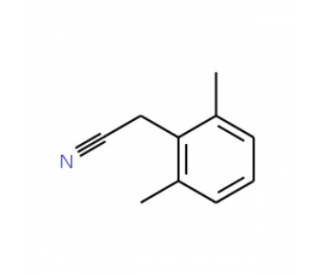詳細(xì)說明
Purity
>90%, by SDS-PAGE under reducing conditions and visualized by Colloidal Coomassie? Blue stain
Activity
Reaction conditions for stimulation of AMSH will need to be optimized for each specific application. Binds AMSH protein with Kd = ~7 μM. In in vitro assays containing 200 nM AMSH, a ~10-fold increase in the rate of hydrolysis of K63-linked diubiquitin FRET substrate was achieved upon the addition of STAM. Half-maximal increase occurred at 0.4 μM STAM.
Source
E. coli-derived
Accession #
Predicted Molecular Mass
60 kDa
E-550 |
| |
Formulation X mg/ml (X μM) in 50 mM HEPES pH 8.0, 200 mM NaCl, 2 mM DTT, 2 mM EDTA | ||
Shipping The product is shipped with dry ice or equivalent. Upon receipt, store it immediately at the temperature recommended below. | ||
Stability & Storage: Use a manual defrost freezer and avoid repeated freeze-thaw cycles.
|
Background: STAM-1
Signal Transducing Adaptor Molecule-1 (STAM-1) is a member the STAM family of adaptor molecules. This ubiquitously expressed protein is 540 amino acids (aa) in length with a predicted molecular weight of 59.18 kDa. Human STAM-1 shares 91% and 92% aa sequence identity with the rat and mouse orthologs, respectively. It contains multiple domains including a VHS domain (aa 16-143) and a Ubiquitin-interacting motif (aa 171-190), both of which bind ubiquitinated proteins, a SH3 domain (aa 210-269) that associates with the zinc metalloprotease STAMBP, and an ITAM domain (aa 370-387), which contains a Hrs-binding site and interacts with Janus kinases (Jaks) (1-6). STAM-1 is involved in downstream signaling stimulated by cytokines and growth factors. It is tyrosine phosphorylated by Jaks in response to a variety of cytokines including IL-2, IL-3, IL-4, IL-7, GM-CSF, EGF, and PDGF, and has been shown to induce DNA synthesis and MYC expression (1,2,5). Additionally, STAM-1 has been shown to regulate CXCR4 signaling and appears to be important for T cell development and survival (7,8). Besides its role in signal transduction, STAM-1 may also be important for the regulation of endocytic membrane trafficking. It associates with Hrs to form the endosomal sorting complex required for transport-0 (ESCRT-0) complex, which binds to ubiquitinated membrane proteins on early endosomes and directs them to the ESCRT-1 complex for lysosomal degradation (6, 9-11). STAM-1 has also been shown to interact with coat protein II complexes and function in trafficking vesicles from the endoplasmic reticulum to the Golgi apparatus (12). This full-length recombinant human protein has no intrinsic deubiquitinase activity but is useful in stimulating the in vitro activity of the JAMM-class deubiquitinase AMSH.
References:
Takeshita, T. et al. (1996) Biochem. Biophys. Res. Commun. 225:1035.
Takeshita, T. et al. (1997) Immunity 6:449.
Asao, H. et al. (1997) J. Biol. Chem. 272:32785.
Tanaka, N. et al. (1999) J. Biol. Chem. 274:19129.
Lohi, O. & V.P. Lehto (2001) FEBS Lett. 508:287.
Mizuno, E. et al. (2003) Mol. Biol. Cell 14:3675.
Yamada, M. et al. (2002) Mol. Cell. Biol. 22:8648.
Malik, R. et al. (2012) J. Biol. Chem. 287:9013.
Bache, K.G. et al. (2003) J. Biol. Chem. 278:12513.
Mizuno, E. et al. (2004) J. Biochem. 135:385.
Ren, X. & J.H. Hurley (2010) EMBO J. 29:1045.
Rismanchi, N. et al. (2009) Traffic 10:201.
Long Name:
Signal Transducing Adaptor Molecule 1
Entrez Gene IDs:
8027 (Human); 20844 (Mouse); 498798 (Rat)
Alternate Names:
DKFZp686J2352; HSE1 Homolog; signal transducing adapter molecule 1; signal transducing adaptor molecule (SH3 domain and ITAM motif) 1; STAM; STAM1; STAM-1; STAM1STAM-1











 粵公網(wǎng)安備44196802000105號
粵公網(wǎng)安備44196802000105號